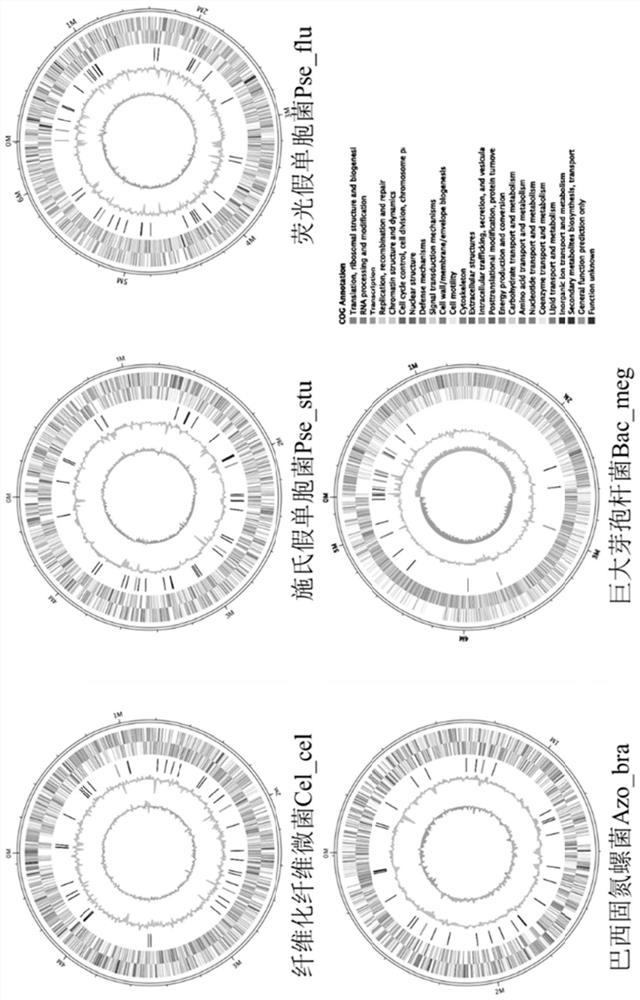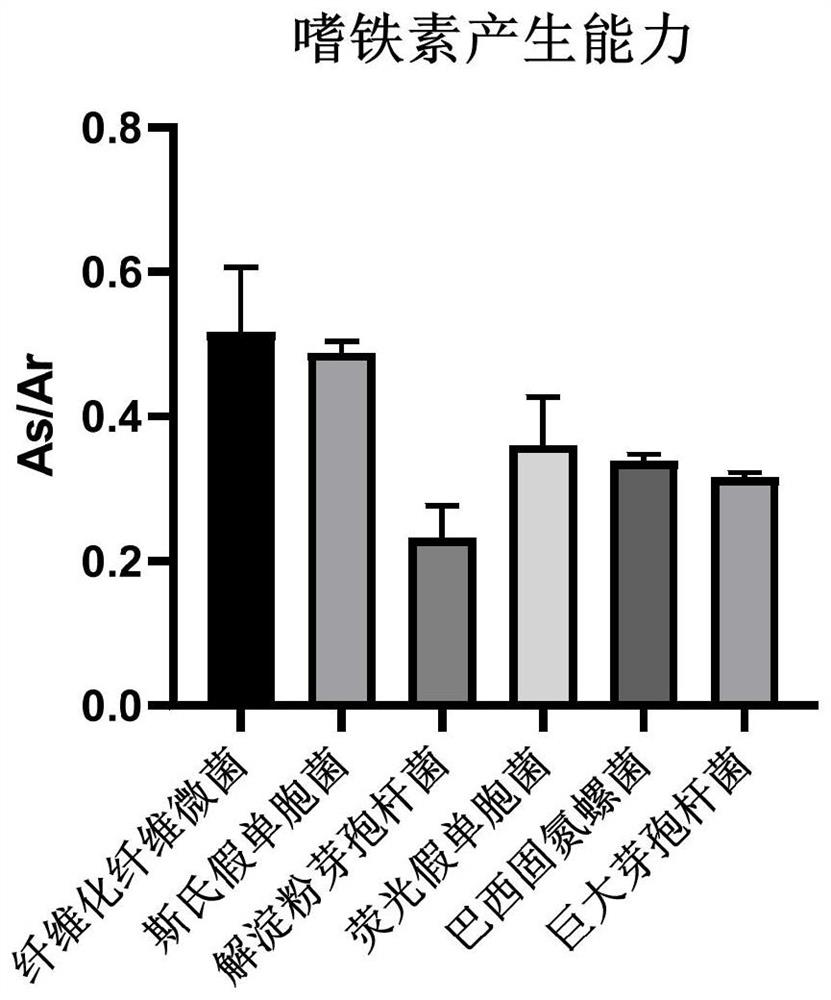Construction method of compound microbial agent
A technology of compound microbial agent and construction method, which is applied in the field of synthetic biology and biological fertilizer science, can solve the problems of single function of microbial fertilizer, inability to reflect rational design principles, unstable field effect, etc.
- Summary
- Abstract
- Description
- Claims
- Application Information
AI Technical Summary
Problems solved by technology
Method used
Image
Examples
Embodiment 1
[0052] Example 1: Reconstructing the genome-scale metabolic model of each strain
[0053] The genome of each strain in the experiment was sequenced to obtain the complete map of each strain. Reconstruct the draft genome by automatic (ModelSEED) or semi-automatic means; manually optimize the reconstructed draft genome, determine and verify the substrate and coenzyme, the molecular formula and charge of the metabolite, the stoichiometric coefficient and directionality of the reaction, and determine the gene-protein reaction relationship , add metabolite identifiers, add spontaneous reactions, transport reactions and exchange reactions, determine biomass composition; transform the reconstructed model into a mathematical model, initialize COBRA Toolbox, load the reconstructed model into MATLAB, verify the stoichiometric matrix S and set Objective functions and constraints; debug models, check model mass balance charge balance, make corrections for unbalanced reactions, test chemic...
Embodiment 2
[0056] Example 2: Siderophilic production ability of each bacterial strain
[0057] Prepare CAS blue detection solution solution, A: Dissolve 60.5mg CAS in 50mL deionized water, add 10mL FeCl 3 solution (containing 1mM FeCl 3 ·6H 2 O, 10mM HCl); solution B: dissolve 72.9mg HDTMA (hexadecyltrimethylammonium bromide) in 40mL deionized water; slowly inject solution A into solution B along the beaker wall to obtain CAS blue color test solution.
[0058] After the supernatant of the culture medium of the strain was sterilized, it was mixed with an equal volume of the CAS detection solution, fully reacted, and the OD was measured 630 , get the absorbance value As, adjust to zero with double distilled water as the control; mix the uninoculated culture medium with the CAS detection solution in equal volume, and measure the OD 630 , to get the absorbance value Ar.
[0059] results and analysis:
[0060] The As / Ar value represents the relative content of siderophiles in the sample...
Embodiment 3
[0061] Embodiment 3: Determination of phosphorus solubilizing ability of each bacterial strain
[0062] Prepare NBRIP medium according to the following formula: glucose 10g, ammonium sulfate 0.1g, potassium chloride 0.2g, calcium phosphate 5g, magnesium chloride hexahydrate 5g, magnesium sulfate heptahydrate 0.25g, distilled water to 1000mL, pH 7.0.
[0063] Activate each strain in LB medium, insert the strain to be tested into phosphate liquid medium (NBRIP), and use no bacteria as blank control, 28°C, 170r min -1 Under the condition of shaking culture for 7 days, the molybdenum antimony anti-colorimetric method was used to quantitatively measure the dissolved phosphorus content and the corresponding pH value.
[0064] results and analysis:
[0065] Such as image 3 It was shown that Pseudomonas fluorescens Pse_flu and Bacillus megaterium Bac_meg had higher ability to solubilize phosphorus.
PUM
 Login to View More
Login to View More Abstract
Description
Claims
Application Information
 Login to View More
Login to View More - R&D
- Intellectual Property
- Life Sciences
- Materials
- Tech Scout
- Unparalleled Data Quality
- Higher Quality Content
- 60% Fewer Hallucinations
Browse by: Latest US Patents, China's latest patents, Technical Efficacy Thesaurus, Application Domain, Technology Topic, Popular Technical Reports.
© 2025 PatSnap. All rights reserved.Legal|Privacy policy|Modern Slavery Act Transparency Statement|Sitemap|About US| Contact US: help@patsnap.com



